LAWS OF THE UNIVERSE (4)
By:
August 31, 2017
One in a series of ten posts reprinting installments of HILOBROW friend Chris Spurgeon’s LAWS OF THE UNIVERSE, a newsletter celebrating the rules, constants, principles, theorems, effects “shining a tiny bit of light onto one tiny bit of how the universe operates.”
Method of folding a large flat surface into a small volume.
Like millions of people, I have an overarching interest in botany, higher dimensional geometry, Japanese culture, and the commercial uses of paper products.(*) So it’s no surprise that this essay is about origami.
Nature constantly has to solve the problem of how to pack a large object in a small container; a chicken inside an egg, a strand of DNA inside a cell nucleus, a brain inside of a skull. And often the answer involves some sort of clever folding arrangement. A well known example is the way the wings of a beetle fold up under its carapace when they’re not being used…
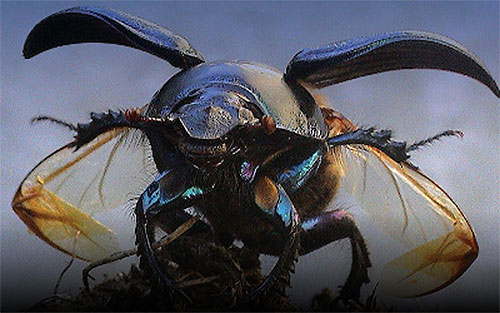
Intricate folds are also at the heart of leaf formation in many species of plants. For instance, consider the leaves of beech and hawthorne(**) trees. Inside the leaf buds the nascent leaves are tightly compressed via a pattern of repeated pleats…
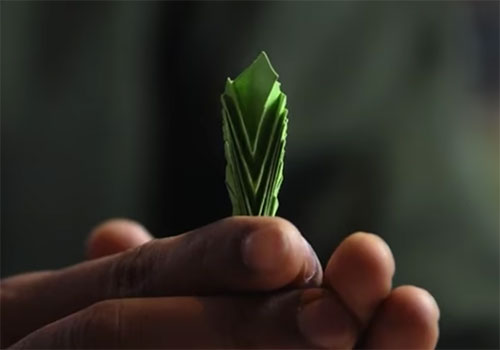
When the bud opens, the leaf unfurls to a size many times larger than the original container.
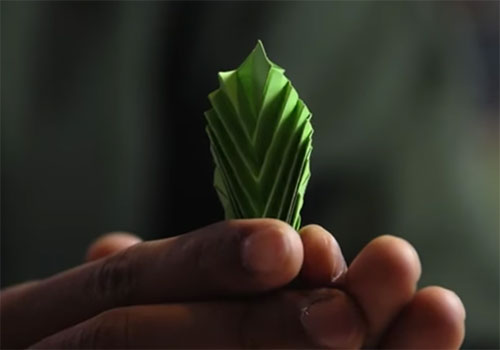
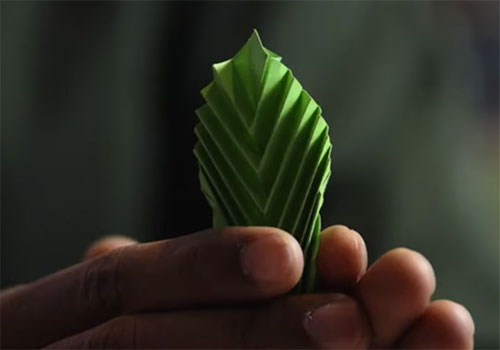

Those plants are using a variation of a origami fold called the Miura-Ori, or Miura fold. Here’s what a basic Miura fold looks like…
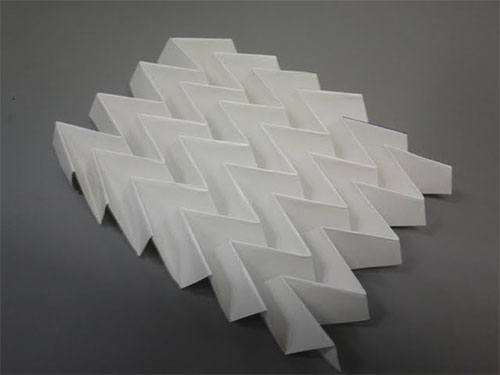
A sheet folded in a Miura pattern can be opened up merely by pulling on opposite corners of the sheet (or in the case of hawthorne or beech trees, by allowing sap to flow through the vascular structures of the leaf).
The creases in a Miura fold aren’t a simple checkerboard pattern. In one direction the folds are simple parallel lines, but in the other direction the lines are in a slight zig-zag…
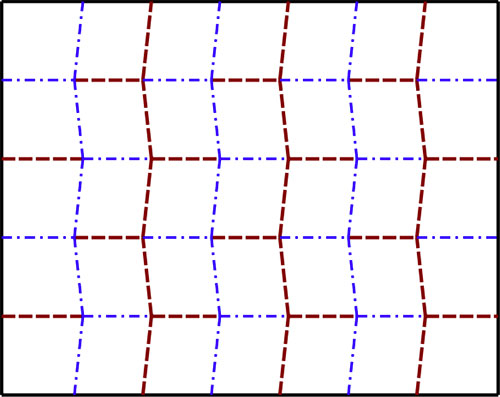
That slight zig-zagging keeps parts of the sheet from flipping inside out when opened. It also allows the sheet to neatly fold closed again, one of the reason Miura folds are often used in pocket subway maps.

Miura folding is named for Koryo Miura of Tokyo University’s Institute of Space and Aeronautical Science. In the 1970s Miura was looking for efficient ways to fold the solar panels of spacecraft. Those panels have to be as compact as possible to fit inside of a rocket, but then in space they need to spread open as wide as possible to catch the sun’s rays. Miura’s fold was perfectly suited to the task.

Miura worked on folding systems throughout the 70s, 80s, and early 90s, and several of his designs have been successfully used on spacecraft. His research has led to the use of a number of origami-based folding systems on spacecraft solar panels, solar wind sails, and instrument shields…

If you want to make a Miura fold yourself, there are plenty of videos online explaining how, or you can follow these detailed instructions.
(*) My childhood was typical, summers in Rangoon, luge lessons. In the spring we’d make meat helmets. When I was insolent I was placed in a burlap bag and beaten with reeds, pretty standard really.
(**) The are many different species of plants called Hawthornes. This time we’re referring to Crataegus punctata, known as the dotted hawthorne or white haw. It’s native to the eastern US and Canada.
CURATED SERIES at HILOBROW: UNBORED CANON by Josh Glenn | CARPE PHALLUM by Patrick Cates | MS. K by Heather Kasunick | HERE BE MONSTERS by Mister Reusch | DOWNTOWNE by Bradley Peterson | #FX by Michael Lewy | PINNED PANELS by Zack Smith | TANK UP by Tony Leone | OUTBOUND TO MONTEVIDEO by Mimi Lipson | TAKING LIBERTIES by Douglas Wolk | STERANKOISMS by Douglas Wolk | MARVEL vs. MUSEUM by Douglas Wolk | NEVER BEGIN TO SING by Damon Krukowski | WTC WTF by Douglas Wolk | COOLING OFF THE COMMOTION by Chenjerai Kumanyika | THAT’S GREAT MARVEL by Douglas Wolk | LAWS OF THE UNIVERSE by Chris Spurgeon | IMAGINARY FRIENDS by Alexandra Molotkow | UNFLOWN by Jacob Covey | ADEQUATED by Franklin Bruno | QUALITY JOE by Joe Alterio | CHICKEN LIT by Lisa Jane Persky | PINAKOTHEK by Luc Sante | ALL MY STARS by Joanne McNeil | BIGFOOT ISLAND by Michael Lewy | NOT OF THIS EARTH by Michael Lewy | ANIMAL MAGNETISM by Colin Dickey | KEEPERS by Steph Burt | AMERICA OBSCURA by Andrew Hultkrans | HEATHCLIFF, FOR WHY? by Brandi Brown | DAILY DRUMPF by Rick Pinchera | BEDROOM AIRPORT by “Parson Edwards” | INTO THE VOID by Charlie Jane Anders | WE REABSORB & ENLIVEN by Matthew Battles | BRAINIAC by Joshua Glenn | COMICALLY VINTAGE by Comically Vintage | BLDGBLOG by Geoff Manaugh | WINDS OF MAGIC by James Parker | MUSEUM OF FEMORIBILIA by Lynn Peril | ROBOTS + MONSTERS by Joe Alterio | MONSTOBER by Rick Pinchera | POP WITH A SHOTGUN by Devin McKinney | FEEDBACK by Joshua Glenn | 4CP FTW by John Hilgart | ANNOTATED GIF by Kerry Callen | FANCHILD by Adam McGovern | BOOKFUTURISM by James Bridle | NOMADBROW by Erik Davis | SCREEN TIME by Jacob Mikanowski | FALSE MACHINE by Patrick Stuart | 12 DAYS OF SIGNIFICANCE | 12 MORE DAYS OF SIGNIFICANCE | 12 DAYS OF SIGNIFICANCE (AGAIN) | ANOTHER 12 DAYS OF SIGNIFICANCE | UNBORED MANIFESTO by Joshua Glenn and Elizabeth Foy Larsen | H IS FOR HOBO by Joshua Glenn | 4CP FRIDAY by guest curators
